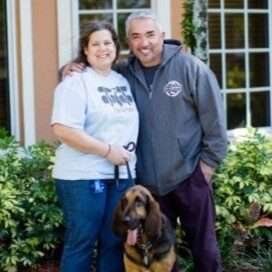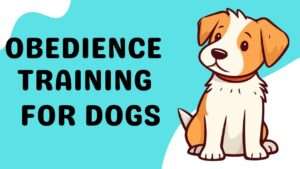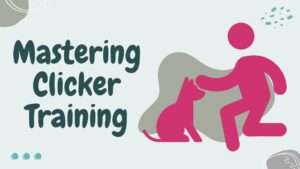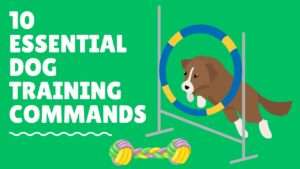Dog leash training is a fundamental aspect of owning a canine companion. Whether you have a new puppy or an adult dog, teaching them proper leash manners is essential for their safety and your enjoyment during walks. But where do you begin? How do you ensure your dog walks beside you instead of dragging you down the street? This comprehensive guide will take you through the ins and outs of leash training, providing you with practical tips and techniques to establish leash etiquette with your furry friend.
Contents Overview
Preliminary Summary
Dog leash training is a crucial aspect of responsible pet ownership, ensuring both your safety and your dog’s. Whether you’re strolling through the neighborhood or exploring the great outdoors, a well-trained dog on a leash makes for enjoyable outings. The process involves teaching your dog to walk politely beside you without pulling or lunging. Begin by introducing your pup to the leash gradually, using positive reinforcement to create positive associations. Practice walking in a controlled environment, rewarding desired behavior and gently correcting any pulling. Consistency and patience are key; leash training takes time and persistence. Remember to keep training sessions short and enjoyable to prevent frustration for both you and your dog. With dedication and positive reinforcement, you can master leash training, allowing you and your canine companion to enjoy countless adventures together.
Understanding Leash Training:
Leash training involves teaching your dog to walk calmly beside you while on a leash, without pulling or exhibiting unwanted behaviors. It’s not only about control but also about building a strong bond and fostering positive communication between you and your dog.
Getting Started
- Choose the Right Equipment:
- Select a well-fitting collar or harness and a sturdy leash.
- For dogs prone to pulling, consider using a front-clip harness to discourage pulling behavior.
- Start Indoors:
- Begin leash training in a quiet, familiar environment with minimal distractions.
- Allow your dog to get accustomed to wearing the leash and collar/harness indoors before venturing outside.
- Positive Reinforcement:
- Use treats, praise, and encouragement to reward desired behaviors such as walking calmly beside you.
- Avoid punishment-based techniques as they can undermine trust and lead to fear or anxiety.
- Introduce Distractions Gradually:
- Gradually expose your dog to different distractions such as other animals, people, or noises as they progress in their training.
- Maintain a calm and reassuring demeanor to help your dog stay focused on you.
- Practice Consistently:
- Set aside dedicated training sessions each day, keeping them short and enjoyable for your dog.
- Consistency is key to reinforcing good leash manners and building a strong foundation.
- Teach Basic Commands:
- Incorporate basic commands such as “heel,” “sit,” and “stay” into your leash training sessions.
- Consistently reinforce these commands during walks to reinforce positive behaviors.
- Correct Undesirable Behavior:
- Redirect your dog’s attention back to you whenever they start to pull or exhibit unwanted behavior.
- Avoid yanking on the leash or engaging in a tug-of-war, as this can escalate tension and frustration.
- Gradually Increase Distance and Duration:
- As your dog becomes more proficient, gradually increase the distance and duration of your walks.
- Gradually introduce longer walks in different environments to generalize their leash skills.
Basic Training Techniques
- Start Early: Begin leash training as soon as you bring your puppy home. Early exposure helps them adapt and learn quickly.
- Choose the Right Equipment: Select a suitable leash and collar or harness. A flat collar or harness is ideal for most dogs.
- Introduce the Leash: Allow your puppy to sniff and explore the leash before attaching it. This helps them associate it with positive experiences.
- Positive Reinforcement: Use treats and praise to encourage desired behavior. Reward your puppy for walking calmly beside you.
- Short Sessions: Keep training sessions short to maintain your puppy’s focus and prevent boredom or frustration.
- Consistency is Key: Be consistent with commands and rewards to reinforce good behavior. Consistency helps your puppy understand what is expected of them.
- Avoid Pulling: Avoid pulling on the leash, as it can create tension and discomfort for your puppy. Instead, encourage them to walk beside you willingly.
- Practice Patience: Understand that leash training takes time and patience. Stay calm and positive throughout the process.
Advanced Techniques
- Distraction Training: Gradually introduce distractions such as other dogs, people, or noises during walks. Teach your dog to remain focused on you despite distractions.
- Heel Command: Teach your dog the “heel” command, encouraging them to walk closely beside you with their shoulder aligned with your leg.
- Direction Changes: Practice sudden changes in direction during walks to keep your dog engaged and responsive to your commands.
- Stop and Wait: Teach your dog to stop and wait at intersections or before crossing roads. This reinforces impulse control and enhances safety.
- Off-Leash Training: Once your dog has mastered on-leash walking, you can begin off-leash training in safe, enclosed areas. Start with short distances and gradually increase the duration.
- Emergency Recall: Train your dog to come to you immediately upon hearing a specific recall command, even in distracting or potentially dangerous situations.
- Socialization: Continue to expose your dog to various environments, people, and animals to reinforce their social skills and confidence.
- Stay Calm: Maintain a calm and assertive demeanor during training sessions. Dogs are highly attuned to their owner’s energy and emotions.
Troubleshooting Common Issues
- Pulling on the Leash
Issue: Your dog constantly pulls on the leash, making walks frustrating and strenuous.
Solution:
- Stop and Go: When your dog pulls, stop walking. Resume only when they ease tension on the leash.
- Change Direction: Abruptly change direction when your dog pulls, teaching them to pay attention to your movements.
- Use a Front-Clip Harness: Redirects your dog’s pulling motion towards you, discouraging pulling.
- Reactivity to Other Dogs or People
Issue: Your dog lunges, barks, or behaves aggressively towards other dogs or people during walks.
Solution:
- Increase Distance: Maintain a safe distance from triggers and gradually decrease it as your dog becomes more comfortable.
- Desensitization and Counterconditioning: Associate triggers with positive experiences through treats or play to change your dog’s emotional response.
- Seek Professional Help: Consider consulting a certified dog trainer or behaviorist for personalized guidance.
- Refusal to Walk or Freezing
Issue: Your dog resists walking, planting their feet, or lying down during walks.
Solution:
- Start Small: Begin with short walks in familiar environments, gradually increasing distance and exposure.
- Encourage Movement: Use treats or toys to motivate your dog to walk, rewarding each step forward.
- Identify Triggers: Determine if specific sights, sounds, or experiences trigger your dog’s reluctance and address them accordingly.
- Overexcitement or Hyperactivity
Issue: Your dog becomes overly excited, jumping, spinning, or pulling excessively during walks.
Solution:
- Pre-Walk Exercise: Engage your dog in play or physical activity before walks to help release excess energy.
- Implement Calming Techniques: Practice relaxation exercises like “sit” or “down” to regain focus and control.
- Redirect Attention: Use toys or treats to redirect your dog’s focus from distractions to you.
Bottom Line
Leash training is an essential skill that enhances the bond between you and your dog while promoting safety and enjoyment during walks. By implementing the techniques outlined in this guide and maintaining patience and consistency, you can successfully teach your dog proper leash manners. Remember, every dog is unique, so be flexible and adapt your training approach to suit your canine companion’s individual needs. With dedication and positive reinforcement, you’ll soon be strolling side by side with your well-behaved pup.
Key Takeaways: Dog Leash Training
- Start Early: Begin leash training as soon as possible, ideally when your dog is still a puppy, to establish good habits early on.
- Use Positive Reinforcement: Reward desired behaviors with treats, praise, and affection to reinforce positive associations with leash walking.
- Be Patient and Consistent: Leash training takes time and repetition. Stay patient and consistent in your approach to see lasting results.
- Choose the Right Equipment: Select appropriate leashes, collars, or harnesses that are comfortable and safe for your dog.
- Practice in Different Environments: Gradually expose your dog to various environments and distractions to generalize leash training skills.
- Address Issues Promptly: Address pulling, reactivity, fear, or aggression promptly and seek professional guidance if needed to ensure your dog’s well-being.
- Focus on Bonding: Leash training is not just about control; it’s an opportunity to strengthen the bond between you and your dog through positive communication and teamwork.
- Stay Calm and Positive: Maintain a calm and positive demeanor during training sessions to create a relaxed and enjoyable experience for both you and your dog.
- Celebrate Progress: Celebrate small victories and progress made during leash training to keep you and your dog motivated and engaged.
- Tailor Training to Your Dog: Every dog is unique, so adjust your training approach to suit your dog’s temperament, behavior, and needs.


























+ There are no comments
Add yours